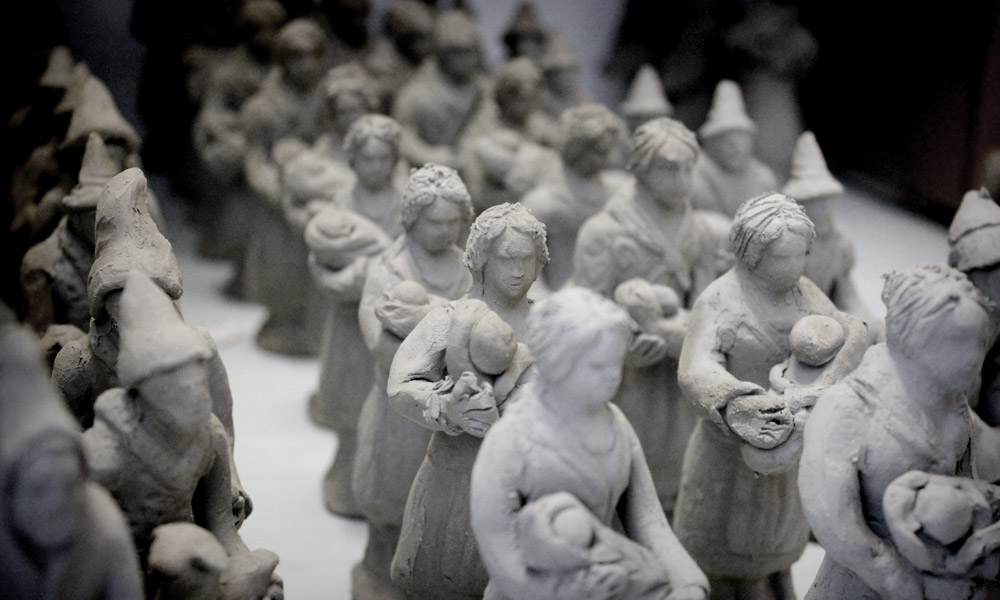Figurines and the “Poor Art” of the Nativity Scenes of Albissola
16 Jan, 2014

A mix between the arts and crafts of the common people and the Albissola ceramic tradition, the figurines of the Nativity Scenes of Albissola are a meeting point between history and legend. They can be found in every home – even in the lobby of the Art Hotel Garden – to enhance the spirit and tradition of the Christmas season with their personalities and colours.
What are the Macachi figurines
The macachi are the characters of the nativity scene, ceramic figurines forged traditionally by poor craftswomen and placed attentively in the homes of all families of the village. Even today, the figurines, with their simple faces and peasant clothing, full of pride and devotion, are arranged every year in household nativity scenes by children and parents, maintaining this vibrant tradition throughout the generations.
They are 12 cm tall and for 200 years they have relived the birth of Jesus in the crib with an atmosphere that combines the traditional nativity scene with figures characteristic of Liguria and Albissola.
Macachi, part History and part Legend
The Albissola Ceramic tradition begins with the Pignattà: those who operate the spinning lathes to forge their works, called Pignatte. The waste is put aside and collected the same day by the wives of the workers themselves (the ‘figulinaie’) to be worked and forged as figurines.
In times past, the ceramic workers were the poorest of the Albissola population, with little money to buy artefacts for a nativity scene (‘presepe’) and only the wealthiest citizens had elaborate, large and expensive figurines. A further obstacle against the creation of nativity scenes in Albissola was the arrival of Napoleon, who, given his secularism, banned them in public areas.
But the figulinaie didn’t give up and went on quietly moulding and painting the statues in the street-level workshops in the dim light of oil lamps. They would work a full year, hoping to get to the day of Saint Lucia with as many figurines as possible to sell at the fair, walking along the dirt road that leads to Savona through the hills and hoping not to have anything left to carry back on the return journey.
The Tradition Continues …
Currently there are very few left of the original moulds for forging the figurines. However, the tradition continues thanks to Nanni and Simonetta Basso descendants of Beatrice, the most famous figulinaia, who left them her precious moulds. Simonetta is a master of the art: with meticulous care, precision, skill and patience, she creates statuettes of outstanding vitality.
Characters of the Abissola Nativity Scene
In addition to the Holy Family there are Gelindo and Gelinda, the good shepherds who were the first to arrive in the cave with gifts for Jesus: her with swaddling clothes and him with a hen. You’ll fall in love with Xeun and Xeunna – Gelone and Gelona – two shepherds who came from the hinterland with warm clothes. There is Matthew, who plays the pipe, and other characters, each with their own characteristics.
The 25 statuettes present in the crib were traditionally made by ordinary people without specific knowledge or artistic skills but with plenty of devotion and determination. They were not ostentatious figurines such as might have been displayed in the houses of rich and noble families. They were very simple with just eyes, a dotted mouth and rosy cheeks … becoming known as macachi (monkeys), a derogatory term used by some critics of the last century to imply that they were very easy to make.
However, in reality, the production of the figurines involves precision, expert craftsmanship, patience and hours of work.
